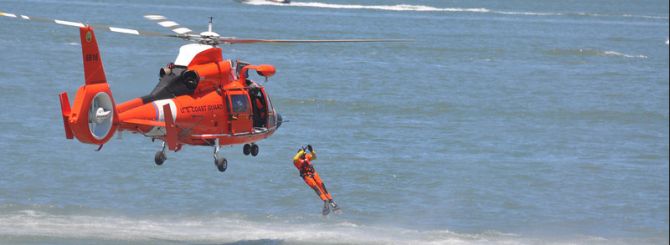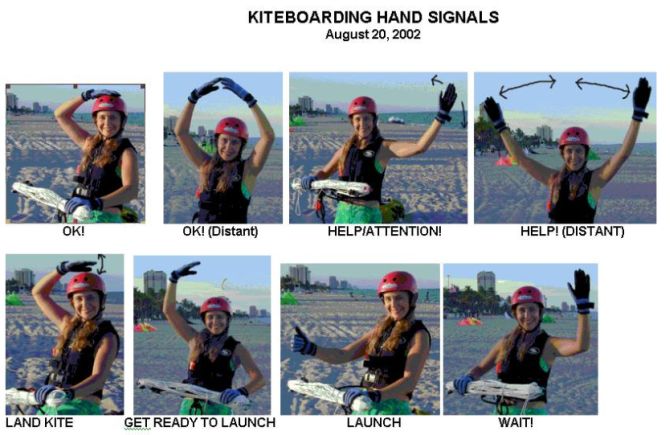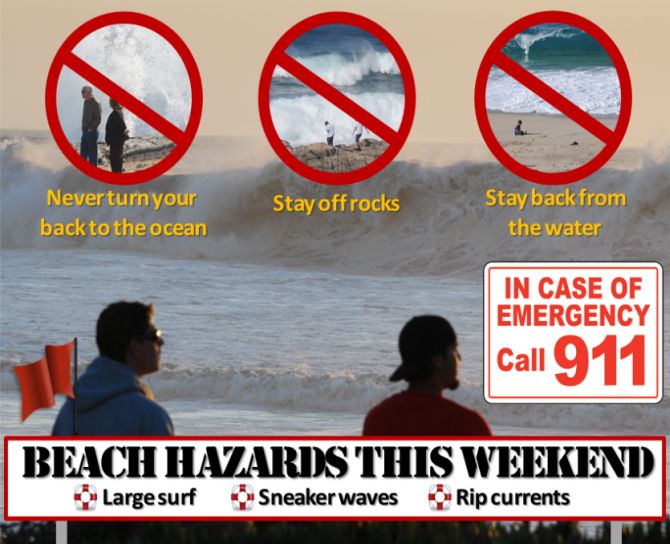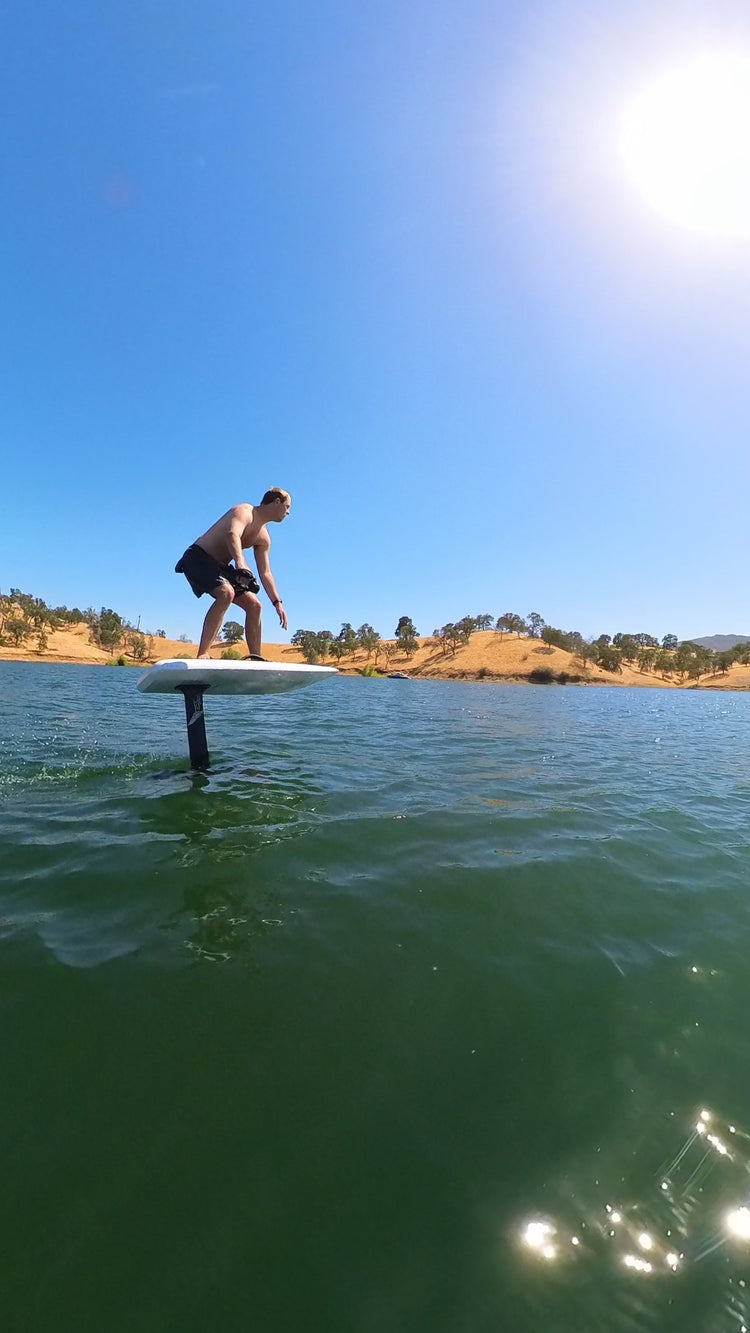

Water Safety is extremely important for everyone going on, in, or near the water. From the smallest lake to biggest bays here are some tips we have assembled to help keep you as safe as possible.
Knowledge – Make sure you have studied or taken lessons for the water craft you plan to use that is specific to the the place you are going to use it. You should also try to obtain as much information on the area/location in which you are getting in to the water. Seek out the expert (person/website) in your location and get to know as much as possible (i.e. weather patterns, submerged obstructions, dangerous places, and or dangerous critters). Consult a map beforehand so you are aware of your surroundings. When leaving be thinking of what it will take to get back to where you started. Be constantly be aware of changing situations. Despite what the forecast is, or what the guy on the beach said, whatever is actually happening is more important.
CPR - Get certified and stay current.
Water Temp + Air Temp = 100 Some call it the rule of 100 but the rule of 110 may be better and here's how it works. Take the Air Temperature and Add it to the Water temperature. If the combined total is not at least 100 (some would say 110 is safer) then you should consider not going. Or at least only going only with special gear to deal with the situation as a more dangerous one.
The Buddy Rule - It's best to enjoy the water with a buddy.
The SUP Flip Rescue - Thanks to Nikki Gregg for this one. This is a greaet technique for using a SUP board to rescue and unconscious person. Watch a video on how to perform an SUP Flip Rescue.
Swimming – You should never take to the water in smaller craft (i.e. Kayaks, or Stand Up Paddleboards) if you are not able to swim. Swimming alone is risky and should be avoided if possible.
RULE 9 – The rule of tonnage which basically states that the larger the vessel in weight/size the more rights they have. This may seem counter intuitive but when you understand that the larger commercial traffic (i.e. Freighters) can take many miles for them to stop it starts to make sense. In addition the course options of these larger vessels is extremely limited. The best choice these larger vessels may have in terms of limiting damage and safety to others is to continue on course – as in run you over.
Boats and Prop Wash - Be very cautious when going behind any vessel. Prop wash can be extremely turbulent and dangerous. Before crossing behind any running vessel try making eye contact with the skipper. Never linger - always cross as quickly as possible. Also pay extra caution to tug boatss. Many modern tug boats have the capability for their props to spin 360 degrees. This means the prop wash can come from any side and can change at any time. Also note that when a tug is towing a barge that the chain connecting the barge and tug may be underwater and therefore not visible to you. Make sure to check well behind any tug boat to ensure it's not towing anything. See photo below - the tug is towing the barge and the tow line is invisible. While the tug can stop that barge has no power source and will keep on going. Tug boats often make fast and unpredictable actions and should be given extra room when they are working.

Collisions – Collisions are to be avoided at all costs. It does not matter if you are in the right you still must avoid the collision. If you are in the right but do not avoid the collision then you are instantly in the wrong. My dad always used to say "They can put 'He was in the right' on your tombstone."
Boats using Horns and Lights Horns/whistles and lights are still used for signaling on boats. While you don't need to learn the whole system of signaling there are few particular things worth memorizing.
- First the repition of 5 horn blasts. This means a nearby vessel operator is seriously concerned of an impending collision and is telling everyone to stay clear. The sequence of 5 may be repeated until the operator is certain they have a safe course.
- The The other is a single horn/whistle blast. This is just an operator letting everyone know where they are.You may hear this at T-Junctions or as Boats exit marina's to let you know they are coming out.
- Lights on a boat that are green lidentify the right (starboard) side of the boat. Red one's identify the left (port) side of the boat.
Navigation Aids (i.e. buoy's, channel markers, beacons, and pilings) are usually placed along coasts and navigable waters as guides to mark safe water and to aid mariners in determining their position in relation to land and hidden dangers.
Almost all U.S. lateral marks follow the traditional 3R rule of "red, right, returning". This means, when returning from sea, keep red marks on the right hand (starboard) side of the vessel. This is important for all Kayakers, Boaters, and Stand Up Paddlers to know this information as it aids in helping gauge the direction that other vessel traffic may be taking. Remember most boats CAN NOT go outside these markers for fear of running aground or hitting an underwater obstruction. As always give ample room to all traffic and try to stay on the right hand side of any channel. Red marks may by marked by triangular shapes and have even numbers on them where green marks are squares and eodd numbered.
Current & Wind – Always be aware of forecasted winds and currents. Remember the axiom "Shallow water moves slower than deep water." This means that if you need to overcome the current you should seek out the shallower water which is usually located at the shore side. Be aware that as water becomes shallower the wave effect will become bigger. For Stand Up Paddleboards you should know proper Knee Paddling Technique. This is key for overcoming the effect of wind. YouTube Knee Paddling Video Click Here.
The Beach – The beach or ocean environment requires special attention. For example a life jacket is a bad thing to wear in a surf zone. Being safe in the surf requires you to be able to swim under water to mitigate the effects of breaking waves. Make sure as always you wear a leash that is the appropriate length and strength for your board. For additional Surf/Ocean specific safety please click here.
Personal Flotation Devices or PFD's - Coast Guard approved Type III PFD's should always be worn with a few notable exceptions. Do not wear a Type III PFD in a surf zone. Purpose built flotation for surf zones is ok when properly matched to rider weight. Also windsurfers and kiteboarders may want to use some flotation however Type III vests should be used very cautiously or avoided. Both Kiteboarders and Windsurfers may need to dive down under the water in order to get to a safe place. Type III PFD's will hold you at the surface preventing you from diving down when you need to do so for safety. For example if you are trapped under your sail.Purpose built flotation aids are ok when matched properly to rider weight. These vest however are not as safe as Type III PFD's.
The Golden Rules – When in doubt don't go out. See the Buddy Rule above - it's Golden too.
Safety Gear/Procedure Checklist
• A properly fitted Personal Flotation Devices (PFDs). While the inflatable PFD's are comfortable and convenient they are not the optimal safety systems. They require you to be conscious and alert in order to deploy and then put them on. The inflatable PFD's are not appropriate for children under 13. Type III Coast Guard Approved vests are recommended except as noted in the above situations.
• Sound Producing Devices – i.e. Whistle.
• Lighting - Be highly visible.
• A 10 to 20ft piece of line is always good to carry if possible
• Knife
• Weather Forecast Checked?
• Tide Checked?
• Your board/boat has your name and phone number on it. This can save massive searches from occurring when the board may be lost and the rider identified.

• Proper attire is critical for forecasted conditions based on the sport. Natural fibers like cotton are not good choices and should be avoided. Use lycra, nylon, or fabrics that will not absorb moisture. Use layering to be flexible as conditions can change quickly and you should always be ready for the coldest scenario you may encounter.
• With a few exceptions you should never leave your boat or board. While your life jacket may float you it's your board or boat that will get you out of the water helping to avoid hypothermia. If you do become separated try to keep a small amount of motion going. Swimming or treading water to help keep body temperatures up. Never ever give up.
• The universal signal for a physical call for help is to wave both hands back and forth over the top of your head. Repeat this until your 100% certain you have been spotted.
• A water proof VHF radio is not a bad call if possible. Channel 16 on the VHF radios is monitored by the Coast Guard.
• Cell Phone in Water Proof Bag.
• File a "Flight Plan". That means someone who is not going with you has knowledge of where you are going and about when you may return.
• For boards make sure you ALWAYS WEAR A LEASH. Even on the calmest of days and in the most seemingly serene environments the leash is a must wear. Bigger heavier boards require thicker longer leashes. A 6ft surf leash is not appropriate for 35lb 12 foot long surfboard. Work with your local shop to make sure you are properly geared up for whatever you are doing that day.
• Water Pumps, Sponges, and Bailing Devices for Kayaks
• Paddle Float (for Sea Kayak/Closed Deck Kayaks) Video Here
• Use the right gear for the right situation. Do not take race gear in to the surf for example.
• Link to USCG Boating Safety PDF Click here.
Always respect the ocean and any body of water. Karma is always out there.
Please note this is by no means a fully listing but only our best attempt to get as much information to ensure your time on the water is the safest possible. If you have any additional ideas or safety please let us know and we will add them to the list.



